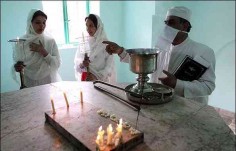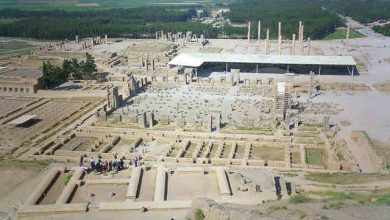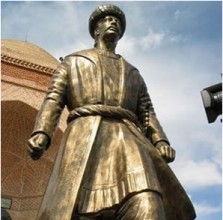What you need to know about the Crusades !
second part (Click here to see the first part)
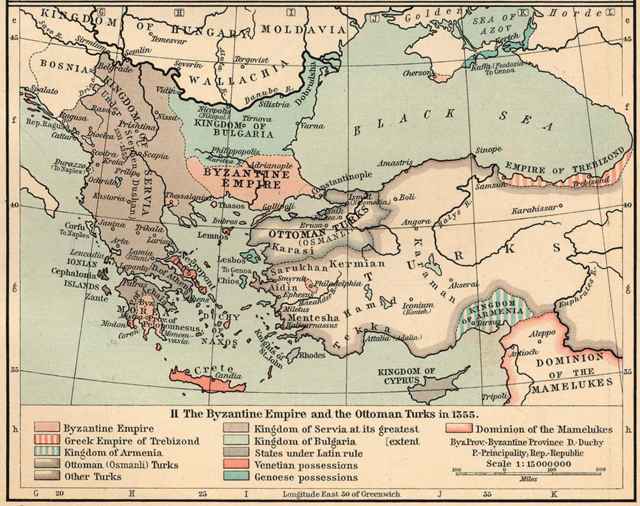
Pope Urban II
The direct reason for the start of the First Crusade was the request of the Eastern Roman Emperor Alexius I from Pope Urban II to confront the Muslim advances in the territory of the Eastern Roman Empire.. In 1071, Eastern Rome was defeated by the Muslims at the Battle of Melazgerd, which resulted in the loss of all of Anatolia except the coastal areas.. Although efforts to resolve the conflict between the Catholic Church and the Eastern Orthodox Church failed after the schism, Alexius still hoped for help from the Pope..
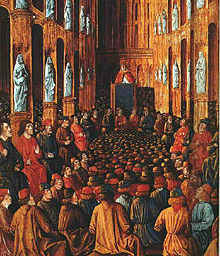
Pope Urban II defined and launched the Crusades in 1095 at the Council of Claremont. He was a reformer who was concerned about evildoers who hindered the spiritual success of the church and Christian clergy and felt the need to revive religion among the people..
He was prompted by Alexius's urgent request. The Pope's decision to start the Crusades against the Muslims was suddenly announced on the last day of the Council. He called on all European kings to start a war to reclaim the Holy Lands. He compared the sanctity of Jerusalem and the holy lands to the looting and desecration of the infidel Turks and aroused public anger by describing the persecution of pilgrims.. He also noted the military danger to Eastern Roman Christians. He obliged the Christians to participate in this holy event and promised that all those who go to war will have their sins forgiven and those who are killed in war will enter heaven directly..
By encouraging war, the Pope also aroused the irreligious warlike feelings of the feudal lords. He asked the barons to participate in the holy war instead of the unholy war in Western Europe. He promised the barons wealth, land ownership, power, and social status, and to pay for all these rewards he assumed to conquer the Turks and Arabs and collect tribute from them.. He said that the Turks and Arabs would simply be defeated by the Christian forces. When he finished his speech, the audience shouted "God wills it!". This sentence later became the battle slogan of the Crusaders. The Pope put Bishop Lipuy in charge of persuading priests to join the war. The news that the war against disbelief will be accompanied by pilgrimage to holy places and there will be great rewards for pilgrims on earth and in heaven spread quickly.. Immediately thousands pledged to go to the First Crusade. Pope Urban II's speech is called one of the most effective speeches in history; A speech that sparked holy wars and occupied the minds and powers of Europeans for two hundred years.
After the First Crusade
The first crusades were carried out by zealous Christians who felt pious. This excitement and anger can be seen in the killing of Jews in the struggle of traveling mobs in Europe and the violent treatment of Eastern Orthodox Christians..
In the 13th century, Christians never showed their former passion and anger. After Acre fell to the Muslims for the last time in 1291, and after the total destruction of the Cathars in Occitania by the Crusaders, the belief in the Crusades was invalidated by papal justifications for civil wars in Europe..
The Knights of Saint John were the last warriors who had their own land. After the fall of Acre, they went to the island of Rood and were driven to the island of Malta in the 16th century, until they were finally removed from rule by Napoleon Bonaparte..
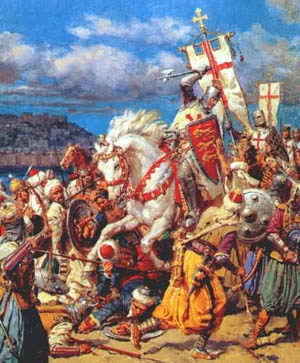
List of wars
Traditional nomenclature considers the number of crusades to be nine between the 11th and 13th centuries. However, this nomenclature does not include many important campaigns, especially those that took place in the 14th to 16th centuries.. In fact, crusades continued until the end of the 17th century, such as the Battle of Lepanto in 1571, the Battle of St. Gotthard in 1664, and the Crusade in Candia. (Today's Crete) In 1669. The Knights of Saint John fought in the Mediterranean Sea and Malta until their defeat by Napoleon Bonaparte in 1798.. During this period, many small crusades were going on in the Iberian Peninsula and central Europe against Muslims, Christian Kharijites, and pagans..
First Crusade (1095 to 1099)
The route of the Crusaders in the First Crusade
In March 1095, at the Council of Piacenza, the ambassadors of the Roman Emperor Alexius I requested help to protect the empire from attacks by the Seljuk Turks.. Later that year at the Council of Clermont, Pope Urban II called all Christians to war against the Turks, with the promise that those killed in the war would receive immediate forgiveness of their sins.
The official crusaders of France and Italy on August 15, 1096 (Ordained by the Pope) they left. The soldiers reached Constantinople by land and were cautiously welcomed by the Byzantine emperor. Determined to recover the lost lands, the army, mainly French and Norman knights under the leadership of the barons, rushed to the south of Anatolia.. In brutal wars, they captured Antioch on June 3, 1098 and finally Jerusalem on July 15, 1099.. They formed four crusader states on the coast of Palestine and Syria
Struggles
The Crusaders fought the Turks. The capture of Antioch by the Crusaders began in October 1097 and lasted until June 1098. After capturing the city, as usual for the cities that did not surrender, the Muslim crusaders massacred the city, destroyed the mosques of the city and looted the property of the city.. Immediately, however, a large Muslim auxiliary army led by Karbagha besieged the victorious crusaders in Antioch. Bhemond I managed to break the siege on June 28, and the starving crusaders marched south until they reached Jerusalem with only part of the initial force.
Capture of Jerusalem
Original text: Capture of Jerusalem (۱۰۹۹)
Godfrey Boyne, French knight, commander of the First Crusade and founder of the Kingdom of Jerusalem.
In defense of Jerusalem, Jews and Muslims fought together against the invading Franks. But they were unsuccessful and on July 15, 1099, the crusaders entered the city. The crusaders massacred the remaining Jews and Muslims of the city, destroyed the mosques and looted the city.. A historian has written that the "isolation, fear and alienation" felt by the Franks far from home helps explain their atrocities; Atrocities such as cannibalism after the siege of Maara Naman in 1098. As a result of the First Crusade, several small crusader states were formed, the most famous of which was the Kingdom of Jerusalem.. In the Kingdom of Jerusalem, a maximum of 120,000 francs (Mostly French-speaking and Christian from Western Europe) They ruled over 350,000 Jews, Muslims and Eastern Christians who had been there since the Arab conquest of the region in 638..
The crusaders also tried to capture the city of Tire but were defeated by the Muslims. The people of Tire asked Zahir al-Din Atabak, the governor of Damascus, for the surrender of Tire to him for help against the Franks. After the Franks were defeated by Zahir al-Din, the people of Tire did not surrender the city, and he simply replied, "What I have done was only for God and the Muslims, not for wealth or kingdom."
After conquering Jerusalem, the Crusaders formed four governments: Kingdom of Jerusalem, Raha section, Principality of Antioch and Tripoli section.. In the beginning, due to internal disputes, Muslims did little against the Crusaders.
Finally, the Muslims began to unite under the leadership of Imaduddin Zangi. He started with the liberation of Raha in 1144. Raha was the first city to fall into the hands of the Crusaders and the first city to be recaptured by the Muslims. The recapture of Raha by the Muslims led to the Pope's call for a second round of crusades.
Crusade 1101
After the successes of the Crusaders in the First Crusade, the Crusaders launched a series of small crusades, but were defeated by the regular army of Qalich Arslan in three different wars.. Sometimes these crusades are considered part of the First Crusade.
Norwegian Crusades 1107 to 1110
Sigurd I of Norway was the first European king to participate in the Crusades, and his army defeated the Muslims on three fronts: Andalusia, the Balearic Islands, and the Holy Land, and joined the rest of the crusaders..
Organization of crusader states
After the First Crusade, the Crusaders established new Christian cities in the Holy Land. Two new knight groups named Knights Templar and Hospitaller (hospitable), was formed. These knights were also noblemen. They protected the Christian immigrants who came to the Holy Land against Muslim attacks and paid for the hospital that the Italians built in the Holy Land.. In 1142, Christian immigrants settled in the Holy Land. They began to build palaces, including the castle of Shahsavaran in Syria. The underground warehouses of these magnificent palaces stored food and weapons for a five-year siege..
Second Crusade (1147 to 1149)
Europe and Christian States in the East in 1142
After a period of peaceful coexistence of Muslims and Christians in the holy lands, Muslims conquered Raha. Several Christian preachers called for a new era of crusades. The French and South German armies, led by Louis VII and Conrad III, respectively, rushed to Jerusalem in 1147, but could not win an important victory.. They were only able to capture Damascus, which was a neutral city, although this city was soon recaptured by Nur al-Din Zangi, the main enemy of the Crusaders.. However, on the other side of the Mediterranean, the Crusaders won important victories in Portugal, and with the cooperation of the King of Portugal Afonso I, they were able to recapture Lisbon from the Muslims in 1147.. In the following year, a part of this group of crusaders, with the cooperation of Count Barcelona, was able to conquer Tartuşe. In 1150, on the front of the Holy Lands, the kings of France and Germany returned to their countries without results. St. Bernard, whose preaching led to the First Crusade, was saddened by the severity of wrongful violence and the killing of Jews. North Germans and Danes attacked the Wends in Eastern Europe in 1147, but were unsuccessful..
The Third Crusade (1187 to 1192)
Muslims were in civil war among themselves for a long time until finally they were united by Salah al-Din Ayyubi and formed a single government.. In 1181, the Muslims under the command of Salah al-Din defeated the Crusaders in the Battle of Hatin with difficulty, and after that they easily defeated the various Crusader armies in all the cities. (including Jerusalem) were recaptured except for a few coastal cities. The Byzantine Empire united with the Muslims out of fear of the Crusaders.
Saladin's victories shocked Europe. To compensate for this disaster, the German emperor Frederick Barbarossa, the French king Philip II and the English king Richard the Lionheart founded another crusade with little intervention from the Pope.. Frederick died on the way and only a few of his soldiers reached the Holy Land. King Philip returned to France under the false pretext of unhappiness with the motive to wrest the Duke of Normandy from Richard.. In a war in 1191, Richard took Cyprus from the Byzantines. In the following centuries, Cyprus was used as a base for the Crusaders and remained under Christian control until 1571. After a long siege, Richard captured Acre from the Muslims and captured all the Muslims in the garrison. Later, he executed all these Muslims after unsuccessful negotiations. The Crusaders marched south along the Mediterranean coast. They defeated the Muslims near Arsaf, captured the port city of Jaffa, and advanced to Jerusalem. After this war, many crusaders returned to Europe and Richard concluded that he would not be able to defend Jerusalem if it was captured.. Therefore, he did not attempt to conquer the city and signed a peace treaty with Saladin the following year.
According to the treaty between Richard and Saladin, Jerusalem remained under Muslim control, but unarmed Christian pilgrims were allowed to visit the city.. Jerusalem and neighboring kingdoms (Except for a few coastal cities) They were still governed under Islamic law. On his way back to England, Richard the Lionheart was arrested and imprisoned by Duke Leopold, the ruler of Austria.. Leopold demands a huge ransom for his release.
Fourth Crusade (1202 to 1204)
The Latin Empire and the division of Byzantium after the Fourth Crusade in 1204
After the limited successes of the Third Crusade, there was little enthusiasm left in Europeans for another war.. In 1202, the Fourth Crusade began at the request of Pope Innocent III with the motive of attacking the Holy Lands through Egypt.. The Crusaders made a contract with Enrico Dandolo, the ruler of the Republic of Venice, to supply the needed ships. Dandolo provided the ships, but the crusaders were unable to pay the expenses. Therefore, Dandolo asked them to attack the port city of Zadar and bring it under the rule of the Republic of Venice in exchange for their debt..
After attacking Zadar and looting it, the Crusaders realized again that they could not afford to pay back the rent of Dandelo's ships.. For this reason, the Crusader leaders decided to go to Constantinople and reinstate the exiled prince who had promised to help them.. After a series of misunderstandings and violence, the Crusaders captured the city in 1204 and established a state called the Latin Empire along with several other Crusader states.. The crusaders looted Constantinople and put the city's inhabitants to the sword. Usually, these events are considered the last point of great separation between the Eastern Orthodox Church and the Catholic Church.
The Fifth Crusade (1217 to 1221)
With meetings, prayers, and sermons, the church tried to start another crusade.. In 1215, the Fourth Council of the Lateran Palace laid out a plan to reclaim the Holy Land. In the first stage, troops from Austria and Hungary joined the forces of the Kingdom of Jerusalem and the Principality of Antioch to attack Jerusalem.. In the second stage, in 1219, the crusaders captured Damietta in Egypt with a great victory, but following the insistence of the papal representative, they failed in a reckless attack on Cairo in July 1221, and due to the lack of provisions and ammunition, the crusaders were forced to retreat.. In Shabikhuni, led by Kamil, the Ayyubid king of Egypt, many crusaders were killed and the rest were forced to surrender, and Kamil accepted their eight-year peace request..
The Sixth Crusade (1228 to 1229)
The Holy Roman Emperor Frederick II repeatedly promised to start a crusade, but he did not keep his promise, which caused him to be excommunicated by Pope Gregory IX in 1228.. However, he departed from the port of Brindisi and reached Acre. Although there was no war, he signed a peace treaty with Kamil, according to which the Christians ruled most of Jerusalem and a strip of the area between Jerusalem and Acre, and the Muslims still had the Dome of the Rock and the Al-Aqsa Mosque.. So he achieved unexpected success. In 1225, he married the heir of the Kingdom of Jerusalem and after the death of the heir in 1228, he became the Kingdom of Jerusalem.. The peace lasted for ten years while many Muslims were unhappy that Kamil had given up the rule of Jerusalem.. In 1244, during the conquest of Jerusalem, Muslims took control of Jerusalem again.
The Seventh Crusade (1248 to 1254)
In 1244, the Khwarezm Shahs captured Jerusalem with the cooperation of the Mamluks.. The Europeans, who had experienced the transfer of Jerusalem between Christians and Muslims many times, had ignored the Pope's calls to recapture Jerusalem.. Finally, Louis IX agreed to the crusade. In 1244, the Crusaders faced the forces of the Khwarezm Shahs led by Zahir Baybars in Gaza and were completely destroyed within 48 hours.. Many historians consider this war to be the death knell of the kingdom of Athens, one of the crusader states..
Louis IX organized another crusade against the Egyptians in 1248-1254.. The crusaders were decisively defeated in this war and Louis was captured. The Arabs received a huge blood price for the release of Louis and released him.
The Eighth Crusade (۱۲۷۰)
In 1270, Louis IX, ignoring the advice of his advisers, again attacked the Arabs in Tunisia and North Africa. He chose the hottest season of the year and as a result his troops died due to various diseases.. Louis himself died and his attempt to recapture the Holy Land failed.
Ninth Crusade (1271 to 1272)
The Mongols narrowly defeated the Egyptians in the decisive battle of Ain Goliath.
In 1271, Edward I of England, after accompanying Louis IX in the 8th Crusade, started another crusade against Bybers.. Louis who died in Tunis and with the defeat of the crusaders in the ninth war, the crusades in the Middle East ended. In the numbering of crusades, sometimes the 9th Crusade is considered a part of the 8th Crusade..
In the last years, the Crusaders, who were facing the danger of the Egyptian Mamluks, hoped to unite with the Mongols.. The Mongol patriarchs were thought to be closer to Christianity, and the Frankish princes had on several occasions been able to incite and organize the Mongols to attack several areas in the Middle East.[ Although the Mongols had successful forays as far as Damascus, they were unable to coordinate effectively with the Crusaders in their raids on the Holy Land and were defeated in battles by the Egyptians.. The biggest defeat of the Mongols was in the decisive battle of Ain Goliath in 1260. Finally, the Mamluks, led by Baybars, gradually implemented their decision to clear Sham from the Franks. With the fall of Antioch (۱۲۶۸), Tripoli (۱۲۸۹), and Acre (۱۲۹۱) Christians who were unable to escape were killed or enslaved, and thus the last vestiges of Christianity disappeared from Syria..


